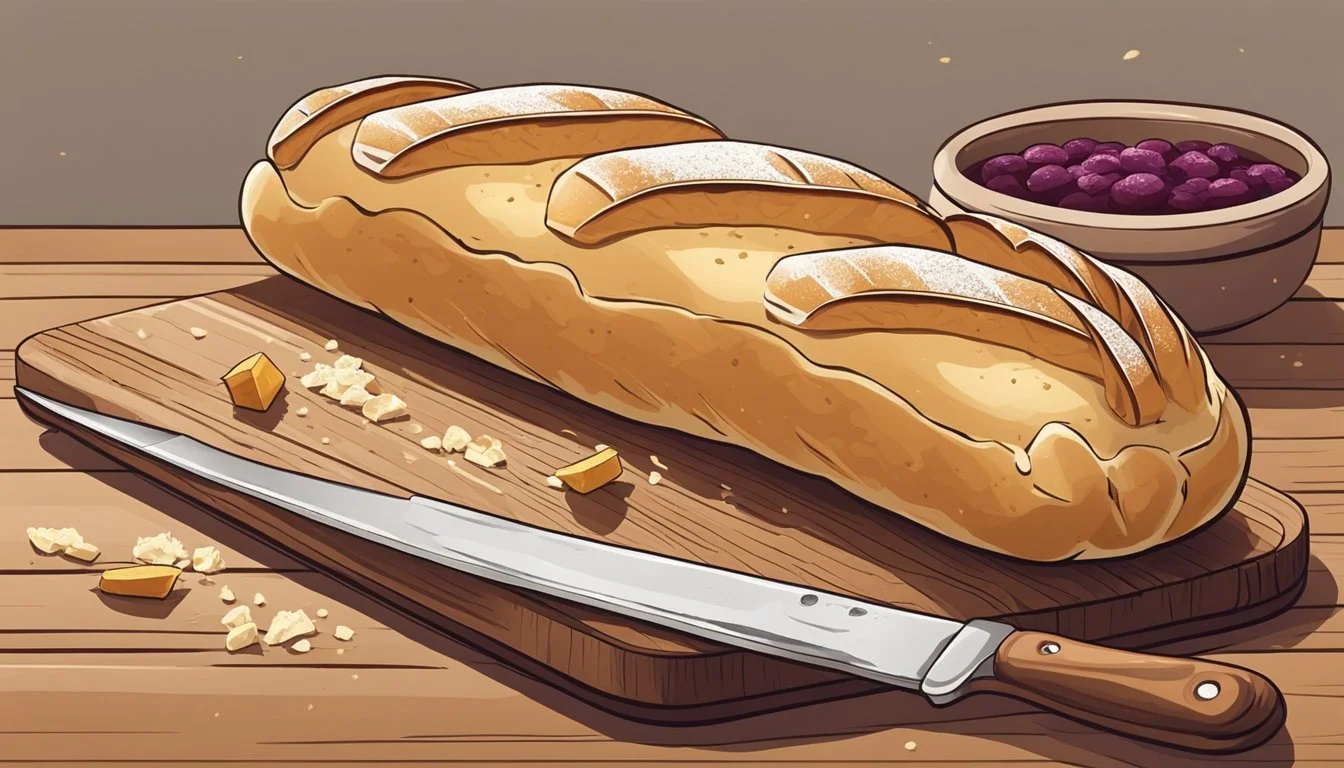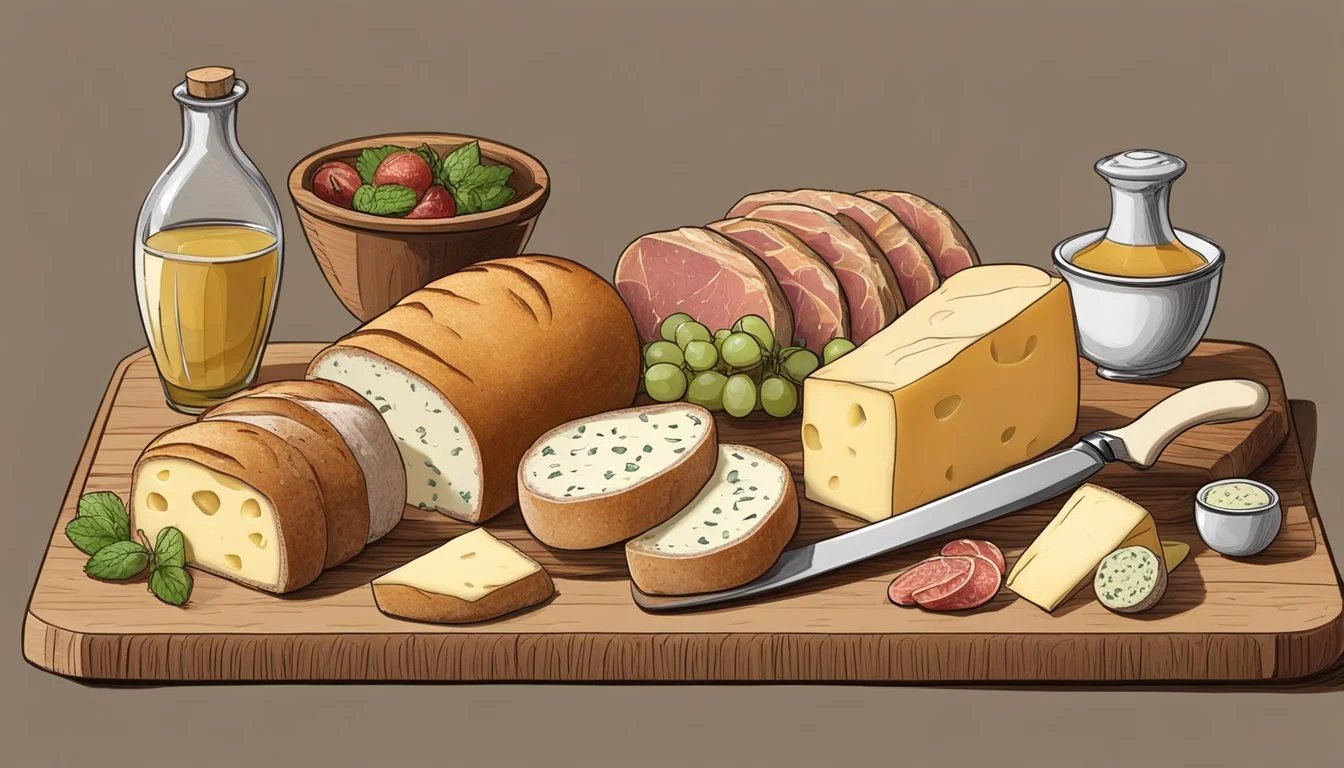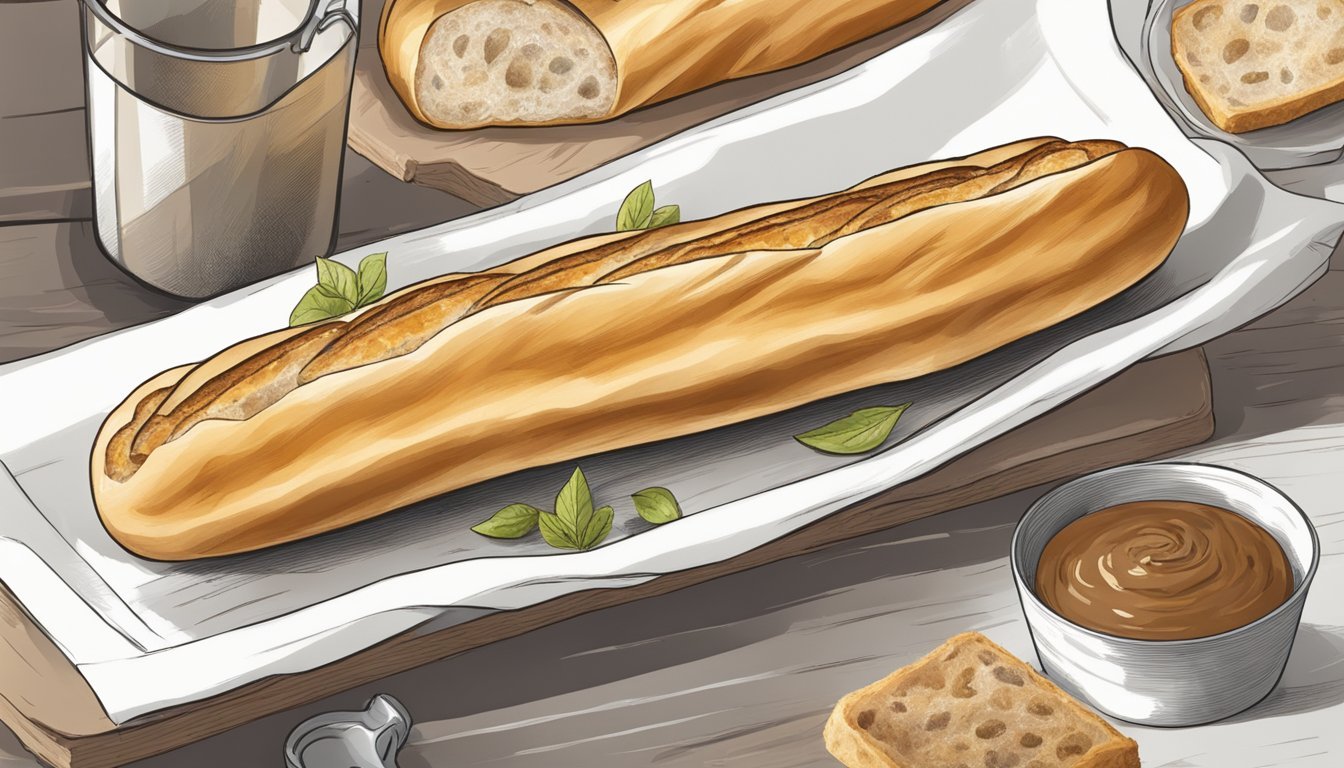How do you eat a baguette?
Tips for Enjoying this French Staple
A baguette is a long, thin loaf of French bread (What wine goes well with bread?) that is iconic to French culture. Recognized for its crusty exterior and soft, airy interior, the baguette is a staple that can be enjoyed in a variety of ways. Its preparation is subject to stringent standards in France, ensuring the bread's quality and maintaining its role as a culinary ambassador of French tradition.
Eating a baguette is often regarded not just as a culinary act but as a foray into the delights of French dining etiquette. While seemingly straightforward, the consumption of a baguette involves some customary practices. It can be savored freshly baked or crisped in the oven, enjoyed plain, with butter, or as the perfect accompaniment to cheese and charcuterie (What wine goes well with charcuterie?). The baguette's versatility and simplicity place it at the heart of French gastronomy.
Understanding the cultural significance of the baguette can enhance the dining experience. In France, bread is treated with respect, and the baguette is no exception. Its preparation involves minimal ingredients, commonly just flour, yeast, and salt, but the techniques for crafting the perfect loaf are honed through tradition. Enjoying a baguette the French way can be as simple as tearing off a piece with one's hands, indicating a casual and intimate approach to one of France’s most beloved culinary traditions.
History and Culture
The French baguette is a quintessential symbol of French culture and tradition, deeply integrated into the daily lives of French people. Originating in France, the baguette is a long, thin variety of bread that has become famous worldwide. Historically, the baguette is believed to have emerged in its recognizable form in the early 20th century. However, similar styles of long, thin French bread can be traced back much further.
In any boulangerie, or bakery, across France, one can observe a variety of baguettes. The craft of making a baguette involves a specific recipe and technique learned by bakers. By law, traditional French baguettes are made with only four ingredients: flour, water, yeast, and salt. The result is a bread with a crisp crust and a tender interior, signifying the quality and simplicity appreciated by connoisseurs of French bread.
Cultural Significance:
Integral part of the French dining experience.
Often present at every meal.
Shared during meals fostering a sense of community.
Through the years, the humble baguette has maintained its status not just as a dietary staple but also as a cultural icon. It's commonly seen poking out of shopping bags or being carried underarm, indicative of its role in daily French life. The image of the baguette is so ingrained that it is often used as a symbol representing the nation itself.
In summary, the baguette is more than just a piece of bread; it's a culinary artifact that resonates with the history and pride of the French people. Its consumption goes beyond sustenance; it is a continuation of tradition, a celebration of artisanal craftsmanship, and a daily ritual that embodies the essence of French living.
Selecting the Perfect Baguette
When one is seeking the quintessential baguette, several key attributes should be considered to ensure the selection of an exemplary loaf. The crust, a defining feature of a superior baguette, should be a golden brown color, indicating it has been baked to the point where a crispy texture is achieved without being overdone.
Criteria Description Crust Should be golden brown and crispy. Texture Look for a soft, slightly chewy interior. Freshness Opt for loaves that are baked the same day. Color The exterior should exhibit an even golden brown hue.
One should visit a local bakery that specializes in French breads to enhance the likelihood of acquiring a fresh, artisanal product. The distinction between types of baguettes can also influence one's choice. La baguette ordinaire is often made with only flour, yeast, and salt, adhering to traditional French standards. Alternatively, some varieties may include additional ingredients, offering a different taste and texture.
The softness of the bread is another indication of its freshness; a fresh baguette will have a soft and pliable interior with a chewy consistency. To truly gauge the quality, individuals should take a moment to touch the crust: it should yield a faint crackle under gentle pressure, signifying an ideal crust-to-softness ratio.
Essential Ingredients and Baking
When baking a baguette, the process begins with four fundamental ingredients: flour, yeast, salt, and water. Typically, a strong wheat flour, such as bread flour or all-purpose flour, is preferred for its higher protein content, which contributes to the dough's structure and elasticity.
For the yeast, bakers can choose between active dry yeast or instant yeast, with measurements varying slightly depending on the specific recipe. Salt is necessary not only for flavor but also for regulating yeast activity and strengthening the gluten network. The balance of water in the recipe is crucial, as it affects the hydration level of the dough, influencing texture and crumb.
Baking Process:
Preparing the dough:
Combine flour, yeast, salt, and water.
Knead until smooth and elastic.
First Rise:
Place the dough in an oiled bowl.
Cover; allow to rise until doubled in size (~1 hour).
Shaping:
Preheat oven to 450°F (232°C).
Divide and shape dough into long, thin loaves.
Baking:
Place on a baking sheet or stone.
Bake 20-25 minutes until golden and crusty.
Cooling:
Cool baguettes on a wire rack before slicing.
A mastery of baking skills is evident when the baguette's crust is a rich golden color, emitting a hollow sound when tapped on the bottom—indicative of proper baking. It's essential the internal temperature reaches the right point, ensuring the loaf is thoroughly cooked.
Preparation Before Eating
To savor a baguette properly, it is essential to master a few preliminary techniques for cutting, heating, and embellishing, as well as understanding the best ways to serve and store it for maximum enjoyment.
Cutting Techniques
A sharp serrated knife is key when slicing a baguette. To serve, cut it diagonally into individual portions, maintaining the baguette's length to capture its texture. For sandwiches, slice the baguette lengthwise and portion it to desired sizes.
Heating Methods
Refreshing a baguette in the oven enhances its taste and texture. Heat the oven to 325°F (160°C) and warm the baguette for five minutes. If preferred, toast slices for a crispier crust.
Recommended Toppings and Spreads
Baguettes pair wonderfully with a variety of toppings and spreads. Apply a layer of butter, cream cheese (how long does cream cheese last?), or olive oil and then add herbs, nuts, or jam to enrich the flavor profile. For a savory touch, a combination of cheese and fruit or meat can be delightful.
Accompaniments
Baguettes complement many dishes. Serve alongside soup like French onion or as part of a salad. Additionally, baguettes can be a base for appetizers, such as bruschetta, or used for dipping in sauces and olive oil.
Creating Sandwiches
For sandwiches, a fresh baguette provides excellent sandwich bread. Include ingredients like ham, brie, vegetables, and condiments between the slices to create a traditional French sandwich or a sub-style sandwich.
Other Uses for Baguettes
Creative uses of a baguette include transforming it into garlic bread, crostini, or even pizza. Slice, season, and bake to create croutons or a flavorful side dish.
Serving the Baguette
Serve the baguette as a baton for communal tearing or pre-sliced for individual enjoyment. If serving a large baguette, consider cutting it into manageable portions for easier consumption.
Storing the Baguette
To maintain a baguette’s freshness, store it properly at room temperature in a paper bag. Avoid plastic, which can make the crust soft, and consume within a day to enjoy its peak flavor and texture.





